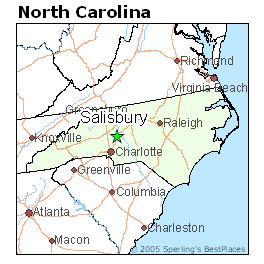 Fibrant, a community-owned fiber-to-the-home provider in Salisbury, N.C., has discovered the importance of redundancy. A major service outage knocked out phone and broadband service for several hours Monday, due to a fiber cut between Concord and Salisbury. Fibrant’s provider, DukeNet, restored service after four and half hours by rerouting around the cable cut, but the incident left Fibrant looking for a backup provider to reduce the chance such a service outage will occur again.
Fibrant, a community-owned fiber-to-the-home provider in Salisbury, N.C., has discovered the importance of redundancy. A major service outage knocked out phone and broadband service for several hours Monday, due to a fiber cut between Concord and Salisbury. Fibrant’s provider, DukeNet, restored service after four and half hours by rerouting around the cable cut, but the incident left Fibrant looking for a backup provider to reduce the chance such a service outage will occur again.
City Manager Doug Paris, who was instrumental in getting Fibrant up and running in Salisbury, said the incident underlined the need to have redundancy to keep customers online. While the city asks DukeNet for an explanation of the most recent service outage, Salisbury is taking bids for backup service.
Redundancy is a lesson virtually every service provider learns — commercial or otherwise. What company has not suffered a significant service outage from an errant backhoe or construction crew severing a vital fiber link? Without a backup provider, service fails and customers howl. Those companies experiencing multiple outages soon learn having a second provider can keep service disruptions to a minimum and more importantly make them invisible to customers.
Paris told the Salisbury Post the city’s intent to contract with a second supplier has its benefits. A large educational institution has now signed up for service, with several potential new business customers considering Fibrant as well.
Fibrant has won a 13% market share in Salisbury, supplying phone, Internet, and cable TV to more than 1,700 customers. Fibrant offers the fastest broadband service in the city and competes primarily with Time Warner Cable. It also faces perennial opposition from anti “government broadband” critics, many nipping at the provider for political reasons.
Opponent John Bare has compared Fibrant to welfare, opposing it because it is not operated by the private sector.
But Fibrant has kept its competitors on their toes, forcing both the local cable and phone company to offer cut-rate deals for new customers and those threatening to switch. Those low prices and retention deals have cut into Fibrant’s projected share of business in the community, but city officials note the customers who do sign up stay with the provider. Fibrant has a 99% customer retention rate.
Fibrant’s biggest challenge remains its start up costs and debt. The provider spends nearly $1,350 for each residential installation, for which it charges customers nothing unless they depart within a year of signing up. Fibrant recoups installation and network construction costs from customers over time. But the company does have plans to more aggressively market its service to Salisbury’s 34,000 residents in light of competitive offers from cable and phone companies. Fibrant manages to win around 30 new customers a week.
Salisbury’s fiber network does not pitch customers “teaser rates” that rise considerably after the promotion expires. It prefers to market its superior speeds and service, and notes all of the revenue earned by Fibrant stays in the local community instead of being pocketed by Wall Street banks and investors.


 Subscribe
Subscribe

Even implementing redundancy can have issues. Several years ago, maybe decades now, when 9600 baud modems were about a dollar a baud, I supplied a major insurance firm with a pair of inverse multiplexors which bundled six leased lines together into a 57.6 Kbps communication line between head office and their major California office. For added protection, the insurance IT personnel used different carriers for these six leased lines. Well, when an earthquake struck California and took out a bridge, it was discovered that all the carriers used the same conduit over the bridge. Murphy will undoubtedly find the common… Read more »
Hi Larry, “So, why do we pay others for the right to communicate when statistics typically show us that 80% of the communication requirements stay within the community? ” Is that statistic from voice/voip traffic? As far as general internet traffic goes, you may find this interesting if you’re new to the subject. http://en.wikipedia.org/wiki/Peering That’s the little secret of the big guys like AT&T, Comcast, Time Warner, etc.. that they’d prefer the average consumer doesn’t know about and one of the reasons why a gigabyte costs 1 cent or less. I think most consumers think these companies pay huge sums… Read more »
Actually Scott, the statistics are my own from doing a survey a number of years ago on about five rural and remote communities. Consequently, this told me that we needed to do the switching and technology into the community, not on some remote legacy system. For larger communities we needed to look at peering with multiple carriers coming into the community and wanting to compete for customers.
The real asinine part of the battle between community networks and monopolies is that if the monopolies were to embrace and white label a community solution everyone would be a winner.